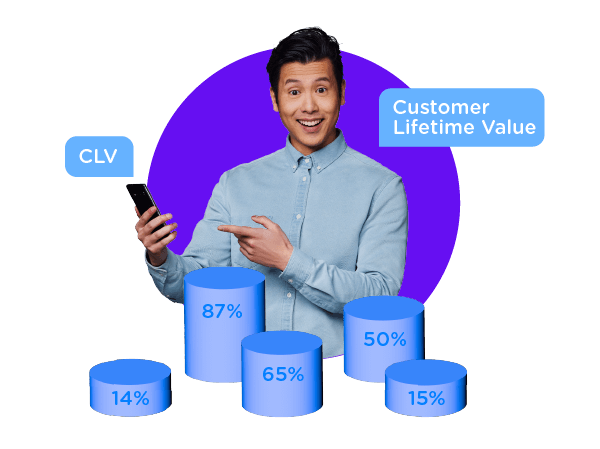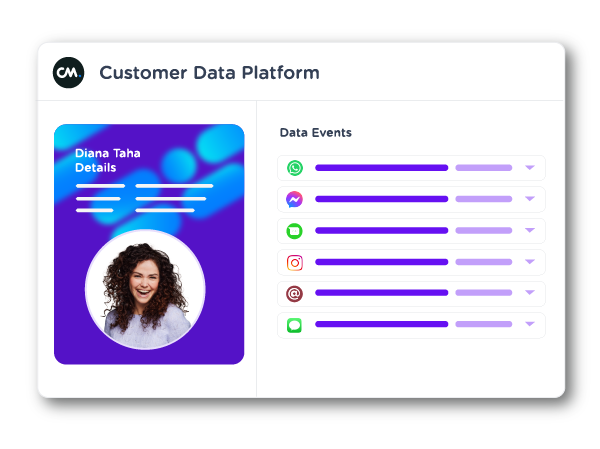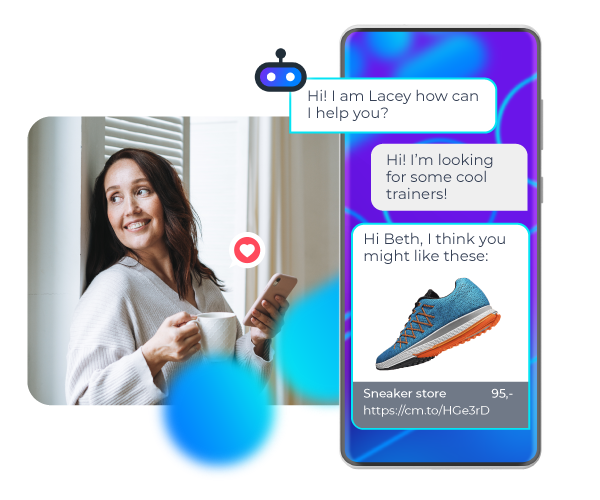- The Key: A Connected Narrative Across Channels
- Getting It Right from the Start: Acquisition
- Personalize Early, Personalize Often
- Connect All the Dots, Always
- Sort and Analyse Data for Insights
- Maintaining the Gains: Retention
- Communicate at the Right Moments
- Take Personalization to the Next Level
- From Acquisition and Retention to Conversational Marketing
Today's customer journey is more complex than ever, with numerous interaction points, which also means increased risks. Every missed opportunity to address an issue, every unprepared customer interaction, presents the possibility of losing an existing customer or a hot prospect venturing elsewhere. The challenges are clear, but fortunately, many opportunities exist to retain your customers and enhance the Customer Lifetime Value (CLV). Let's delve into them.
The Key: A Connected Narrative Across Channels
Your potential customers are scrolling through social media, visiting your website, and reaching out for more information. They're clicking links on laptops, tablets, and phones, skimming through emails from countless companies, and engaging with chatbots, all while expecting seamless responses. These interactions generate data, but this data often needs to be noticed in the crowd, scattered across channels and devices, disconnected, and fragmented.
Nevertheless, these interactions must be part of a connected storyline, an ongoing narrative aimed at understanding each customer's personality and preferences by concentrating on converting a more significant proportion of marketing prospects into lifelong customers while reducing churn and drop-offs at each journey stage.
Let's start acquisition first, then retention, and ultimately bring them together for the key goal: maximized Customer Lifetime Value.

Getting It Right from the Start: Acquisition
First and foremost, with the ever-expanding array of media choices available today, you must understand that your ideal customers might need to be made aware of your existence. With hundreds of ads bombarding their screens daily, consumers often tune out, switch off, and skip. Mass advertising can build brand recognition, but it comes at a substantial cost, especially with Click-Through Rates (CTRs) declining while Cost-Per-Mille (CPMs) rise, making the initial acquisition a formidable challenge.
Personalize Early, Personalize Often
To stand out in this crowded environment, the key is to make every touchpoint in the customer journey, every piece of content, and every offer deeply relevant. This significantly increases the chances of engaging prospects and encouraging them to choose your product or keep your brand in mind when the intention to purchase arises. Personalization relies heavily on data, beyond basic recommendations like "People who bought X also bought Y." Instead, it considers the source of the click, the alignment of behavior with target personas, and the content that resonates most with individuals.
Connect All the Dots, Always
Personalized communications should extend to customized customer service. For instance, if your email campaign is successful and 10% of recipients call your sales line, the marketing communication should be readily accessible to the customer service agent handling the call. Lack of visibility can lead to confusion and a poor customer experience.
Even in the early stages of the customer journey, consumers expect you to have all relevant information available at every touchpoint. Making customer data accessible to all authorized personnel can significantly boost conversion rates.
Sort and Analyse Data for Insights
Connecting data points offers another advantage: it allows for in-depth analysis and insights. What channels do customers prefer? Does this preference change with the time of day? Do they seek customer service exclusively on Sundays? And how does this customer profile compare to your existing customer base?
This is where a Customer Data Platform (CDP) comes into play. It integrates different datasets, enabling thorough interrogation and analysis. For instance, if a customer's initial question pertains to your delivery times, you can analyze how many others have asked the same question and how many of them placed an order within two weeks. This information can help optimize processes and improve efficiency, leading to more effective acquisition strategies.

Maintaining the Gains: Retention
Winning the initial order is just the beginning. The real story unfolds as that new customer transforms into a repeat client. You must be where your customer wants you to be. Customers have diverse preferences when it comes to communication channels. Some prefer WhatsApp, while others avoid it. Some like email but dislike newsletters, while others still prefer direct human interaction. Understanding these preferences and adapting to them can lead to incremental improvements in customer retention.
Communicate at the Right Moments
Early personalization efforts in mobile marketing suffered from information overload. Consumers learned that providing their details often resulted in more communications, but not necessarily more valuable. To maintain a healthy customer relationship, avoid overwhelming your customers' inboxes.
One well-timed email a month or a targeted discount at the end of a quarter can yield better results than a daily barrage of random offers. Personalizing not only the communication but also the offer based on the customer's ordering history and preferences can further enhance the effectiveness of your retention strategy. As customers place more orders and their relationship with your brand deepens, retention becomes increasingly essential. Treating a customer who has made twenty orders this year the same as you did last year is a missed opportunity.
Take Personalization to the Next Level
As you gain more insights into a customer's buying patterns and channel preferences, it's essential to customize your entire communications plan accordingly. This includes understanding their preferred times for contact, the topics they engage with most, and their preference for automated chatbots versus human interaction. As 64% of the consumers look for a customer service set-up that allows them to solve it themselves.*

Continuously adapting to your customer's evolving preferences is the ultimate goal when addressing acquisition and retention challenges. It's how you maximize Customer Lifetime Value, making the most of every sales opportunity and keeping customers engaged for the long term.
From Acquisition and Retention to Conversational Marketing
At CM.com, we are excited about the concept of proper conversational marketing. This approach integrates all customer interactions across channels into a unified dataset, ensuring every sale, upsell, and cross-sell feels tailored to the individual. This level of personalization enhances the customer experience, and every channel choice becomes a strategic advantage.
If you're grappling with the challenges of acquisition and retention, consider viewing your marketing efforts as conversations. Start by engaging in a conversation with us, and let's explore how CM.com can help you navigate these challenges effectively.
